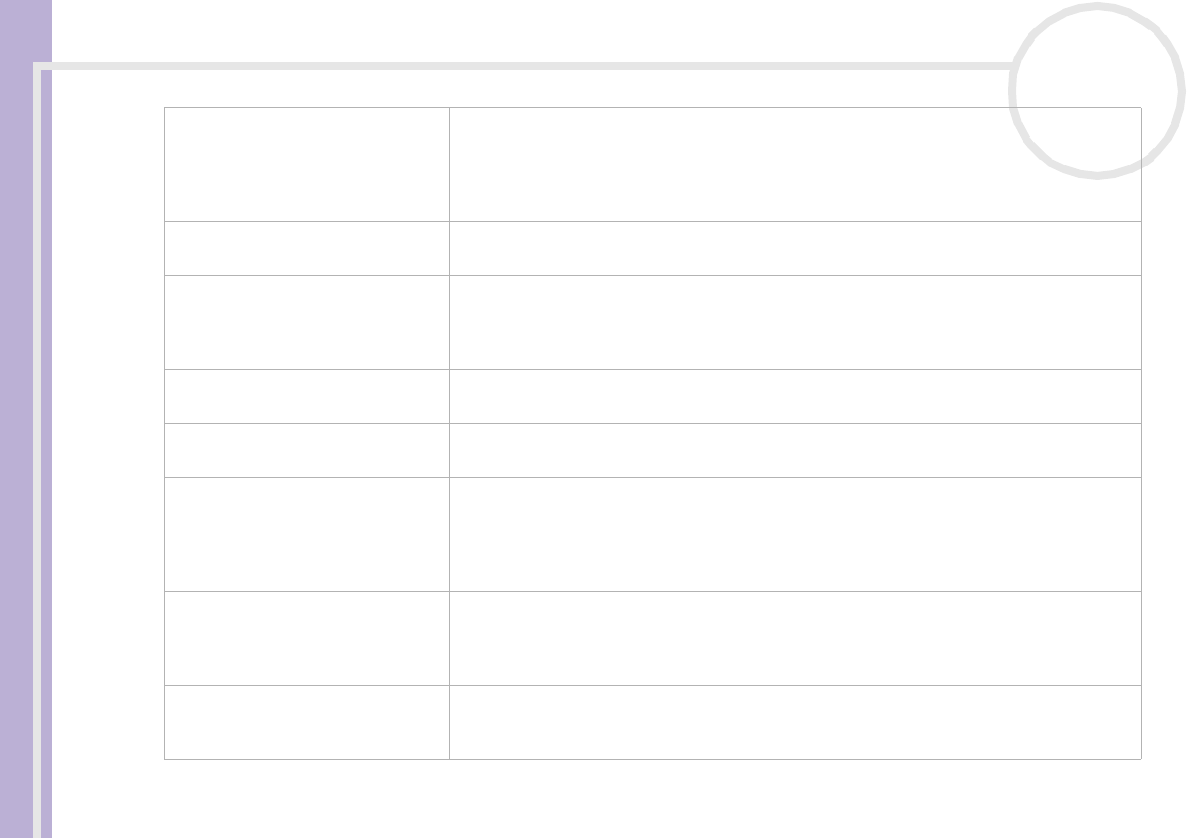
Sony VAIO Desktop User Guide
Glossary
96
nN
LCD
Short for Liquid Crystal Display. Flat display technology using liquid crystals (and light
polarisation) to provide sharp, flicker-free images on a screen comprised of millions of tiny
cells. Colour can be produced by two basic techniques. Passive matrix is the less expensive of
the two technologies. The active matrix technology (or TFT) produces better quality but is
also more expensive.
LED
Short for Light-Emitting Diode. A semiconductor device that lights up when electricity passes
through it.
MAPI
Short for Messaging Application Program Interface. A Microsoft Windows interface
enabling you to send e-mail messages. It allows e-mail access and distribution among
applications. MAPI-compatible applications include a Send Mail or Send in the File menu of
the application.
maximum RAM
The maximum amount of RAM that your computer can contain. Once this amount is
reached, you can no longer add additional RAM to your computer.
Motherboard
The motherboard is the main circuit board inside your computer. It holds the CPU, the BIOS,
the memory and so on.
MPEG
MPEG or Moving Pictures Experts Group is a standard for audio-visual compression of video
sequences. MPEG achieves high compression rates by storing only the changes from one
frame to another. The decrease in data is generally imperceptible to the human eye. MPEG-
1 was developed for digital storage of video and audio data on CD-ROM. MPEG-2 achieves
better image and audio quality and is more targeted to TV broadcasting and DVD.
Operating system
The operating system is software that manages all the other programs in a computer. It
defines how the computer reads and writes information to its disks (and other hardware).
Windows 2000, Windows Millennium Edition, Windows XP Professional and Windows XP
Home Edition are examples of operating systems found on VAIOs.
Partition
A partition is a logical division of a computer’s hard disk. A two-partition hard drive would
typically contain C: and D: drives. Partitioning is particularly useful if you run more than one
operating system or to clearly separate your data files from your installed software.


















